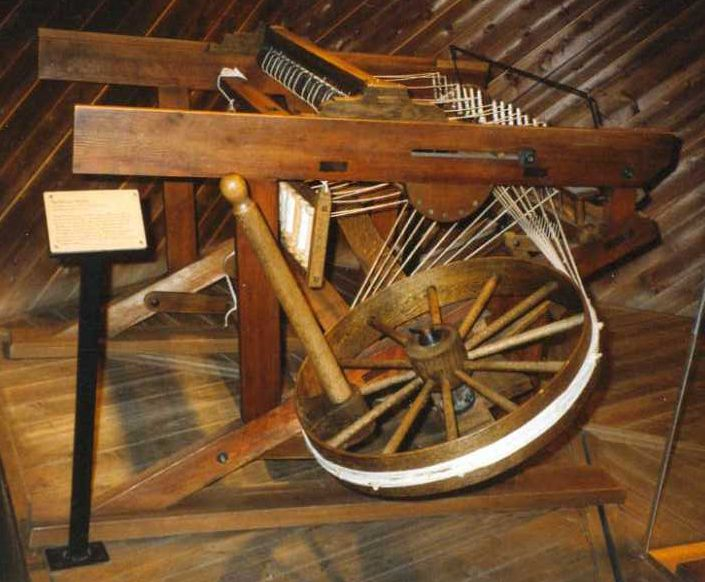The Spinning Jenny
James Hargreaves invented the spinning jenny. Around 1720, he was born in Oswaldtwistle, near Blackburn. Blackburn, a town of roughly 5,000 people, was famous for the creation of "Blackburn greys", linen warp, and cotton weft cloths imported from India. Typically, they were sent to London to be printed.
Cotton output couldn't keep up with the textile industry's demand at the time, so Hargreaves spent some time thinking about how to enhance the process. The flying shuttle (John Kay 1733) had doubled the productivity of the weavers, and now the spinning jenny could meet that need by raising the productivity of the spinners even more. The thread produced by the machine was coarse.
Hargreaves came up with the idea for a metal frame with eight hardwood spindles at one end. On that frame, a set of eight rovings was mounted to a beam. When fully stretched, the rovings flowed through two horizontal wood bars that could be clasped together. The spinner's left hand might be used to draw these bars along the top of the frame, extending the thread. The spinner spun the thread with his right hand by rapidly turning a wheel, which caused all of the spindles to revolve. The thread was wound onto the spindle when the bars were returned. The threads were guided to the proper location on the spindle using a pushing wire.
Hargreaves kept the machine a secret for a while, but he did make a few for his own burgeoning business. The drop in yarn prices enraged Blackburn's big spinning community. After breaking into his house and smashing his machinery, he was forced to flee to Nottingham in 1768. The hosiery industry, as well as knitted silks, cotton, and wool, were all centered here. With the help of a joiner named Thomas James, he started up a shop making jennies in secret for a Mr. Shipley. On Mill Street, he and James started a textile business. He received a patent (no. 962) for his invention, the Spinning Jenny, which was a machine for spinning, drawing, and twisting cotton, on July 12, 1770.
As one of the major inventions of the Industrial Revolution, the spinning jenny was successful because it could hold more than one ball of yarn, allowing it to produce more yarn in less time and at a lower cost. If the flying shuttle had not been designed and deployed in textile plants, the spinning jenny would not have been as successful. Its success was restricted by the requirement to prepare the rovings on a wheel, which was hampered by the necessity to the card by hand. It was widely used in the cotton and fustian industries until around 1810. The spinning mule took the place of the spinning jenny. The Slubbing Billy is based on the jenny, which was adapted for the slubbing process.












